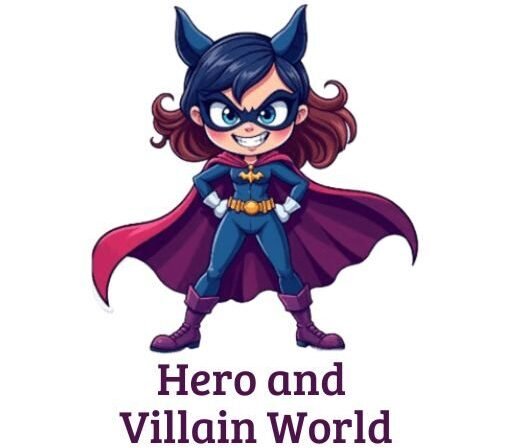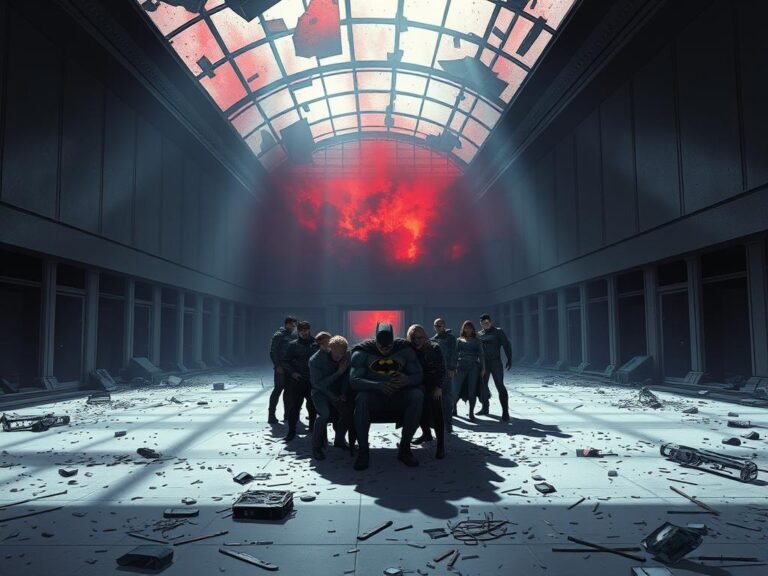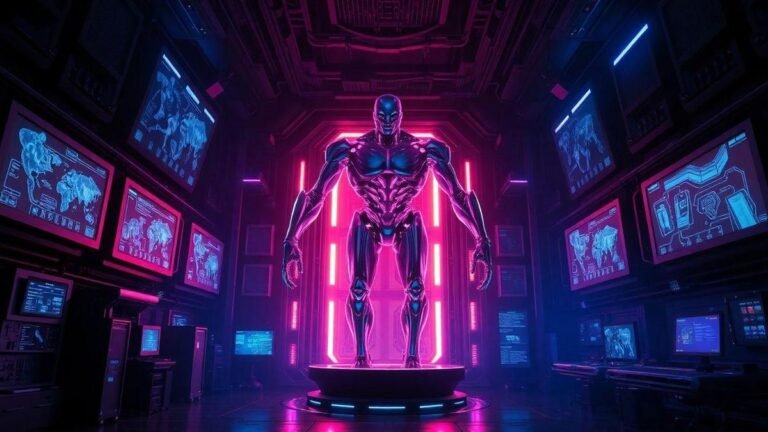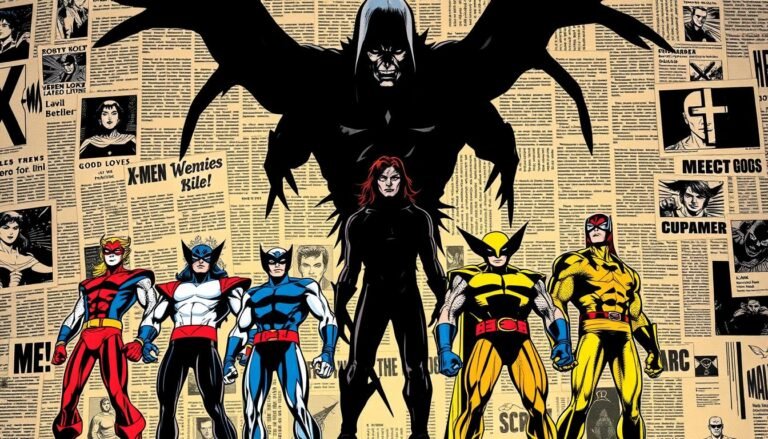Iron Man vs. Captain America: The Civil War Conflict

I still remember the day the Marvel Universe was torn apart by a conflict that would change its landscape forever. The civil war between two of its greatest heroes, Tony Stark and Steve Rogers, was more than just a clash of egos; it was a battle of ideologies.
The introduction of the Sokovia Accords sparked a debate that divided the Avengers. Tony Stark, now a self-proclaimed leader, signed the accords, permitting government oversight, while Steve Rogers refused, fearing it would tie their hands in a crisis.
This conflict was a turning point in the Marvel Cinematic Universe, setting the stage for Avengers: Infinity War and Avengers: Endgame. As we explore this iconic storyline, we’ll delve into its creation, characters, and lasting impact on the Marvel Universe.
The Epic Clash That Divided the Marvel Universe
The Marvel Civil War storyline is a pivotal moment in the Marvel Universe, sparking debates among fans worldwide.
This conflict, which emerged in the comic books and was later adapted into the Marvel Cinematic Universe (MCU), revolves around the clash between Iron Man and Captain America over the Superhero Registration Act.
The original Civil War comic book storyline was published by Marvel Comics as a seven-issue limited series from July 2006 to January 2007.
This period was significant as it followed the post-9/11 era in America, where debates about security versus freedom were rampant. The comic series tapped into these discussions, making it particularly relevant to readers at that time.
The Creators Behind Civil War
The Civil War storyline was crafted by Marvel Comics editor Mark Millar and writer Brian Bendis, although it was primarily driven by Mark Millar’s vision.
The artwork was handled by Steve McNiven, whose detailed illustrations brought the intense conflict to life. The collaboration between these creators resulted in a compelling narrative that explored the complexities of heroism and accountability.
When Civil War Was Written
The timing of the Civil War comic’s release coincided with real-world discussions about government surveillance and the Patriot Act, making it a timely and thought-provoking read.
The storyline was published during a period when the world was grappling with the balance between national security and individual freedoms.
A decade later, the MCU film Captain America: Civil War was released in 2016, following the events of Avengers: Age of Ultron.
The film adapted the core themes of the comic book series, using the destruction of Sokovia as a catalyst for the conflict, similar to how the Stamford incident functioned in the comics.
Despite the time difference between the comic’s publication and the film’s release, both versions tapped into timeless questions about freedom, security, and accountability that continue to resonate with audiences.
The key points to consider are:
- The historical context of the Civil War comic series and its reflection of post-9/11 America’s debates.
- The strategic positioning of Captain America: Civil War in the MCU timeline after Age of Ultron.
- The enduring relevance of the themes explored in both the comic book series and the MCU film.
By examining these aspects, it becomes clear that the Civil War storyline, in both its comic book and cinematic forms, represents a critical exploration of the responsibilities and challenges faced by heroes in the modern world.
Origins of the Iron Man vs. Captain America Conflict
The conflict between Iron Man and Captain America, as depicted in the Marvel Civil War storyline, has its roots in a complex web of ideological differences and personal convictions.
At its core, the Civil War narrative explores the tension between accountability and freedom, two values that are both essential and potentially conflicting.
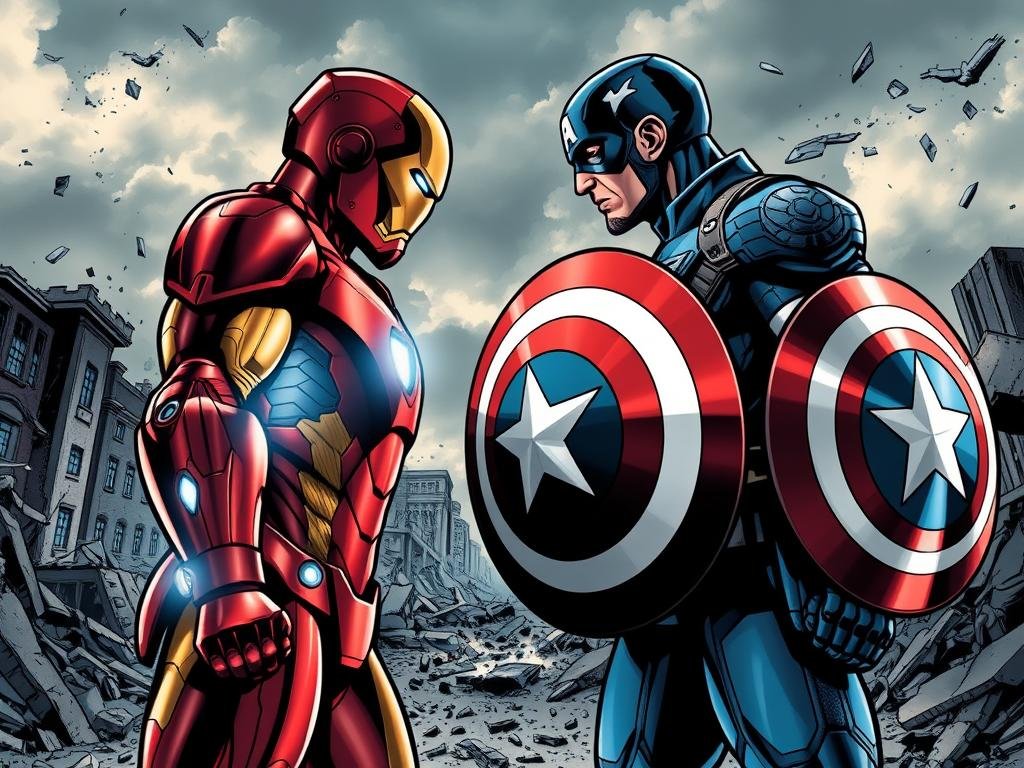
The Sokovia Accords: The Catalyst
The immediate cause of the conflict is the Sokovia Accords, a governmental proposal aimed at regulating the Avengers’ actions. Tony Stark, aka Iron Man, supports the accords, believing that oversight is necessary to prevent tragedies and ensure accountability.
In contrast, Steve Rogers, aka Captain America, vehemently opposes the accords, fearing that they will restrict the team’s ability to respond quickly to threats and compromise their independence. This disagreement sets the stage for a deeper exploration of their ideological differences.
Ideological Differences Between Tony Stark and Steve Rogers
The divide between Tony Stark and Steve Rogers is not just about the Sokovia Accords; it’s rooted in their fundamentally different backgrounds and values.
Tony Stark, coming from a privileged background, has always been more comfortable with the idea of working within established systems and leveraging his resources and influence to effect change.
On the other hand, Steve Rogers, having grown up during the Great Depression and served in World War II, has a deep-seated distrust of unchecked authority.
His experiences with HYDRA’s infiltration of S.H.I.E.L.D. have further solidified his belief in the importance of maintaining the team’s freedom to act without bureaucratic hindrance.
Their perspectives on security and freedom are shaped by their past experiences and the values they hold dear. Tony’s support for the accords is motivated by a desire to prevent future tragedies and ensure that the Avengers are held accountable for their actions.
In contrast, Steve’s opposition stems from his concern that governmental control will undermine the Avengers’ ability to protect the world effectively and compromise their integrity.
Ultimately, the conflict between Iron Man and Captain America during the Civil War is a nuanced exploration of complex ideas and moral ambiguities.
Both characters have valid concerns and noble intentions, making the conflict a rich and thought-provoking narrative that challenges the reader to consider the merits of different approaches to heroism and responsibility.
Freedom vs. security, the basic human dilemma. Can heroes really protect both? Two iconic figures, two living symbols whose choices make them superheroes and leaders, come to completely opposite conclusions. This provocative collection, edited by acclaimed media psychology writer Travis Langley and with a foreword by the legendary Stan Lee (!), examines the complex psychological and political choices made by Captain America and Iron Man throughout their careers, culminating in Marvel’s superhero civil war which spreads far beyond the Avengers themselves. Why do Steve Rogers and Tony Stark see things so differently? What are their motivations? Is either one truly in the right? Captain America vs. Iron Man: Freedom, Security, Psychology, our latest entry in this popular psychology series. analyzes the polar sides of this debate–individual freedom vs. national security.
First Appearance of the Civil War Storyline
The Marvel Civil War storyline first emerged in the comic book series, marking a pivotal moment in the Marvel Universe.
This significant event brought to the forefront the ideological differences between two of Marvel’s most iconic characters: Iron Man and Captain America. The storyline was a superhero conflict that resonated with fans worldwide.
Comic Book Debut
The Civil War storyline made its comic book debut in Captain America #501 and Marvel Spotlight: Civil War, before becoming its own limited series, Civil War #1-7. This series, published in 2006, was a major crossover event that garnered significant attention.
The storyline began with the introduction of the Superhuman Registration Act, a government proposal that required all superheroes to register their identities with the authorities.
This act became the catalyst for the conflict between those who supported it, led by Iron Man, and those who opposed it, led by Captain America.
Key Issues in the Civil War Series
The Civil War limited series consisted of seven main issues, with numerous tie-in comics across Marvel’s various titles. Some of the key issues in the series included pivotal moments that significantly impacted the Marvel Universe.
| Issue # | Significant Event | Impact |
|---|---|---|
| 2 | Spider-Man unmasked publicly | Demonstrated the far-reaching consequences of the conflict |
| 4 | Creation of the Thor clone (Ragnarok) | Escalated the stakes with the death of Goliath |
| 7 | Final battle between Captain America and Iron Man | Culmination of their ideological differences |
These issues became instant collector’s items due to their significance in Marvel continuity and their impact on long-established characters. The final battle between Captain America and Iron Man marked the climax of the Civil War storyline, leaving a lasting legacy in the Marvel Universe.
The Winter Soldier played a significant role in the storyline, influencing the events that unfolded. The conflict ultimately led to a deeper exploration of the characters and their motivations, enriching the Marvel Universe.
Major Comics Featuring the Civil War Conflict
The Marvel Civil War storyline is one of the most pivotal events in comic book history, reshaping the universe.
This conflict between Iron Man and Captain America led to a significant division among superheroes, resulting in a complex and multifaceted narrative that spanned numerous comic book issues.
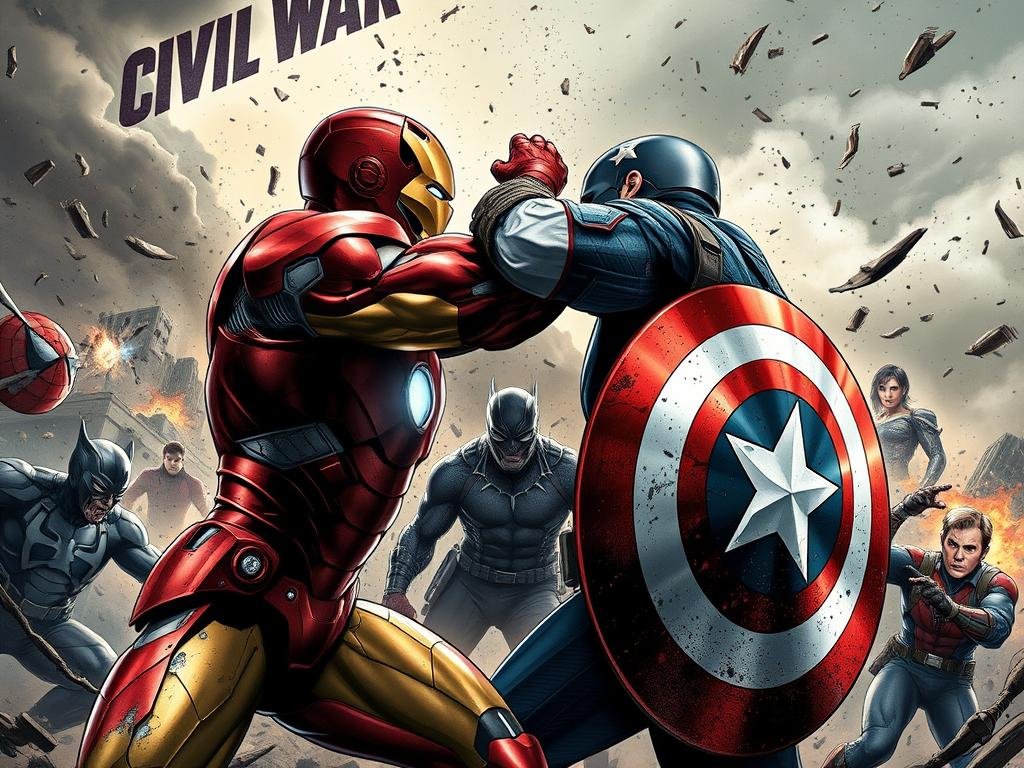
Main Civil War Limited Series
The core of the Civil War storyline is contained within the limited series “Civil War” (2006-2007), which ran for seven issues.
This series, written by Mark Millar and illustrated by Steve McNiven, laid out the central conflict between the pro-registration heroes led by Iron Man and the anti-registration heroes led by Captain America.
The series was critically acclaimed for its bold narrative and significant character developments.
Tie-in Issues and Spin-offs
The Civil War storyline was supported by numerous tie-in issues and spin-offs, which expanded on the conflict and its impact on various characters and teams within the Marvel Universe.
Titles such as “The Amazing Spider-Man,” “The Avengers,” and “Fantastic Four” featured storylines that directly tied into the events of the limited series, providing a broader understanding of the Civil War‘s consequences across the Marvel Universe.
Aftermath Comics
The aftermath of the Civil War led to significant changes in the Marvel Universe, explored in several key storylines. “The Death of Captain America” storyline, which followed the events of Civil War, saw Steve Rogers assassinated, creating a power vacuum and a significant shift in the superhero community.
Additionally, “The Initiative” series was launched, showcasing Tony Stark’s vision of registered heroes being implemented across America, with training facilities and state-specific superhero teams.
The legacy of Captain America continued in the “Captain America” title, with Bucky Barnes taking up the shield and dealing with the legacy of both Steve Rogers and the Civil War.
These aftermath comics demonstrated the lasting impact of the conflict, showing that the divisions didn’t simply heal once the main event concluded.
The consequences of the Civil War were far-reaching, affecting the entire Marvel Universe and leaving a lasting legacy that continued to shape the team dynamics and individual characters long after the initial conflict.
The introduction of the Superhero Registration Act and the subsequent division among heroes had a profound effect on the Marvel Universe, leading to the involvement of the Winter Soldier in the storyline and setting the stage for future conflicts.
Key Characters in Iron Man vs. Captain America: The Civil War Conflict
As I delve into the Marvel Civil War, it becomes clear that the conflict was not just about Iron Man and Captain America, but about the heroes who stood with them.
The division among the Marvel heroes was a complex issue, with various characters bringing their unique perspectives and motivations to the table.
Pro-Registration Heroes: Team Iron Man
Team Iron Man consisted of heroes who supported the Superhero Registration Act, believing it would bring accountability and order to the superhero community.
Tony Stark’s vision for a regulated superhero world was backed by characters like War Machine and Ms. Marvel, who saw the potential benefits in registration.
The pro-registration side was not just about following Tony Stark’s lead; many heroes genuinely believed in the cause. For instance, Spider-Man initially supported registration, seeing it as a way to gain more recognition and legitimacy as a hero.
Anti-Registration Heroes: Team Captain America
On the other side, Team Captain America was made up of heroes who opposed the Registration Act, fearing it would lead to government control over their actions and identities.
Steve Rogers’ stance against registration was supported by heroes like Bucky Barnes and Ant-Man, who valued their independence and freedom.
The anti-registration heroes were driven by a desire to protect their autonomy and the privacy of their loved ones. They saw the Registration Act as a threat not just to their way of life but also to the very principles of being a hero.
The Impact of Neutral Characters
Not all heroes took a clear stance during the Civil War. Characters like Black Widow and T’Challa/Black Panther navigated the conflict in complex ways, sometimes switching allegiances or maintaining neutrality.
“The X-Men, for example, largely stayed out of the conflict, reflecting the broader theme of neutrality and the difficulty of choosing sides in a morally complex situation.”
Neutral characters often served as moral compasses or wildcards, influencing the outcome of the conflict in significant ways.
Black Widow’s ultimate decision to help Captain America escape, despite initially supporting the Accords, highlighted her pragmatic approach to loyalty and her commitment to doing what she believed was right.
| Character | Initial Stance | Final Action |
|---|---|---|
| Black Widow | Supported Registration | Helped Captain America |
| T’Challa/Black Panther | Pursued Vengeance | Provided Sanctuary to Team Cap |
| Vision | Torn Between Logic and Emotion | Struggled with Allegiance |
The Civil War conflict was a defining moment for many Marvel characters, testing their loyalties, principles, and understanding of what it means to be a hero.
The diverse reactions to the conflict, from outright support to nuanced neutrality, enriched the Marvel universe, making it more relatable and complex.
The Story Behind Civil War
The Marvel Civil War storyline is one of the most pivotal narratives in comic book history, setting the stage for a conflict that would divide the superhero community.
At its core, the Civil War was a complex struggle that went beyond a simple battle between heroes; it was a clash of ideologies, a test of the Marvel Universe’s very fabric.
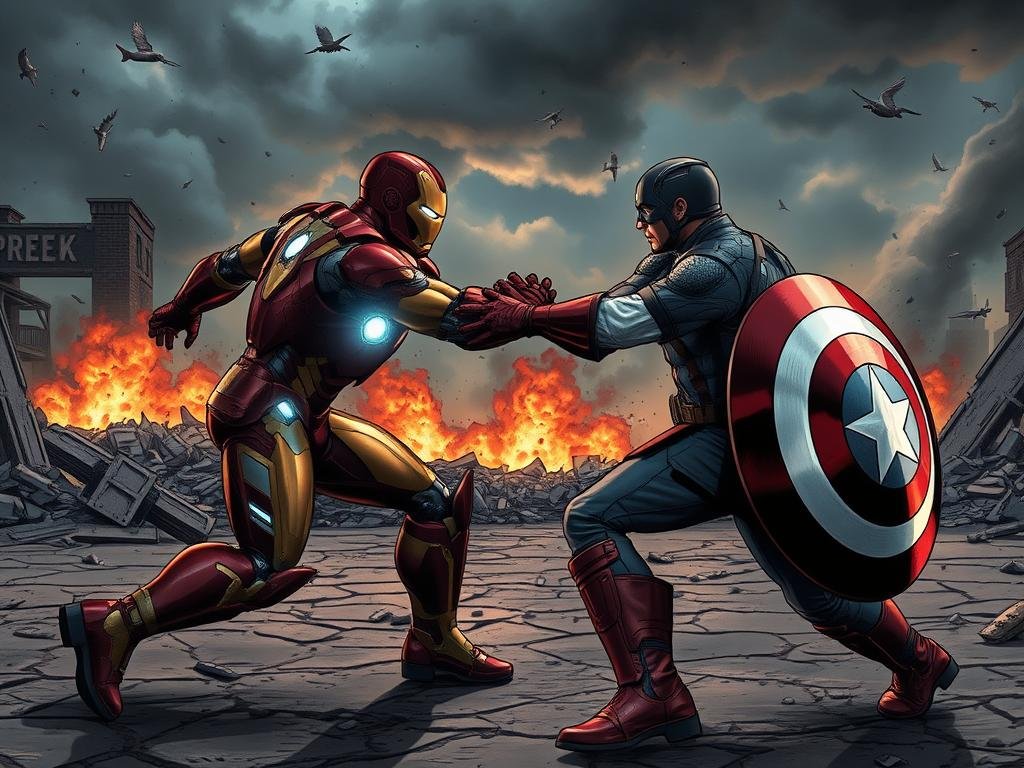
The Stamford Incident
The Civil War began with the Stamford Incident, a tragic event that sparked the debate over superhero regulation.
During a battle between the New Warriors and a group of villains, Nitro exploded, killing over 600 civilians, including many children. This disaster raised questions about the accountability of superheroes and whether they should be regulated.
The Stamford Incident was a turning point, making the need for superhero registration a pressing issue.
The public and the government demanded action, leading to the proposal of the Superhero Registration Act. This act would require all superheroes to register their identities with the government, making them accountable for their actions.
The Superhero Registration Act
The Superhero Registration Act was the legislative response to the Stamford Incident. It was championed by Iron Man, who believed that regulation was necessary for the greater good.
However, Captain America opposed the act, seeing it as an infringement on the heroes’ freedom and a threat to their identities.
The debate over the Superhero Registration Act divided the superhero community into two factions: those who supported registration, led by Iron Man, and those who opposed it, led by Captain America.
This division marked the beginning of the Civil War, as both sides began to recruit other heroes to their cause.
Escalation of the Conflict
The conflict escalated rapidly as both sides became more entrenched in their positions. The creation of a Thor clone by Iron Man that killed Goliath was a pivotal moment, crossing a moral line that couldn’t be uncrossed.
Captain America’s underground resistance movement further intensified the conflict, leading to a full-scale battle between the two factions.
The final confrontation ended with Captain America surrendering after witnessing the destruction their fight had caused. This conclusion marked the end of the Civil War, but the impact of the conflict was far-reaching, changing the Marvel Universe forever.
The Civil War was more than just a team against team conflict; it was a nuanced exploration of the complexities of heroism and the challenges of balancing individual freedom with collective security.
Iron Man’s Perspective: Why Tony Stark Supported Registration
Tony Stark’s support for the registration act was a multifaceted decision, driven by both personal guilt and a vision for a safer future. As Iron Man, Tony had always walked a fine line between his personal identity and his responsibilities as a superhero.
Guilt Over Past Mistakes
Tony Stark felt a deep sense of guilt over the consequences of his actions as Iron Man, particularly the events that led to the Stamford Incident.
This incident had resulted in significant collateral damage and loss of life, weighing heavily on Tony’s conscience.
He believed that by supporting the registration act, he could help prevent such tragedies in the future by ensuring that superheroes were better regulated and trained.
Vision of a Safer Future
Tony envisioned a future where superheroes operated within a framework that would minimize the risk of collateral damage.
He saw the Sokovia Accords as a means to achieve this, providing a structured environment where heroes could be held accountable for their actions. This vision was not just about control but about creating a safer world for everyone.
Government Cooperation Strategy
Tony Stark’s business background significantly influenced his approach to the Sokovia Accords. He viewed the accords as a compromise that would allow the Avengers to maintain their operational capability while gaining official legitimacy.
By cooperating with the government, Tony believed that the Avengers could influence the implementation of the accords and potentially mitigate their more restrictive aspects over time.
The Sokovia Accords gave the Avengers United Nations backing, which not only legitimized their actions but also provided them with resources and international legitimacy.
Tony’s strategy included the calculation that refusing to cooperate would likely result in the Avengers being forcibly shut down, making a flawed agreement better than no agreement at all.
| Aspect | Tony Stark’s View | Implications |
|---|---|---|
| Legitimacy | Gaining official recognition through the Sokovia Accords | Enhanced credibility and cooperation with governments |
| Operational Capability | Maintaining the ability to act effectively as a team | Potential for more coordinated and effective responses to threats |
| Accountability | Being held accountable for actions through government oversight | Reduced risk of unchecked power and collateral damage |
In conclusion, Tony Stark’s support for the registration act was driven by a combination of personal guilt, a vision for a safer future, and a strategic approach to government cooperation.
His decision was not taken lightly and reflected his complex character and the pragmatic realities of being a superhero in a complex world.
Captain America’s Stance: Why Steve Rogers Opposed Registration
At the heart of Captain America’s opposition to the Superhero Registration Act lay a deep-seated commitment to the principles of freedom and protection.
Steve Rogers, as Captain America, was not merely reacting to the idea of registration; he was driven by a complex understanding of its potential implications.
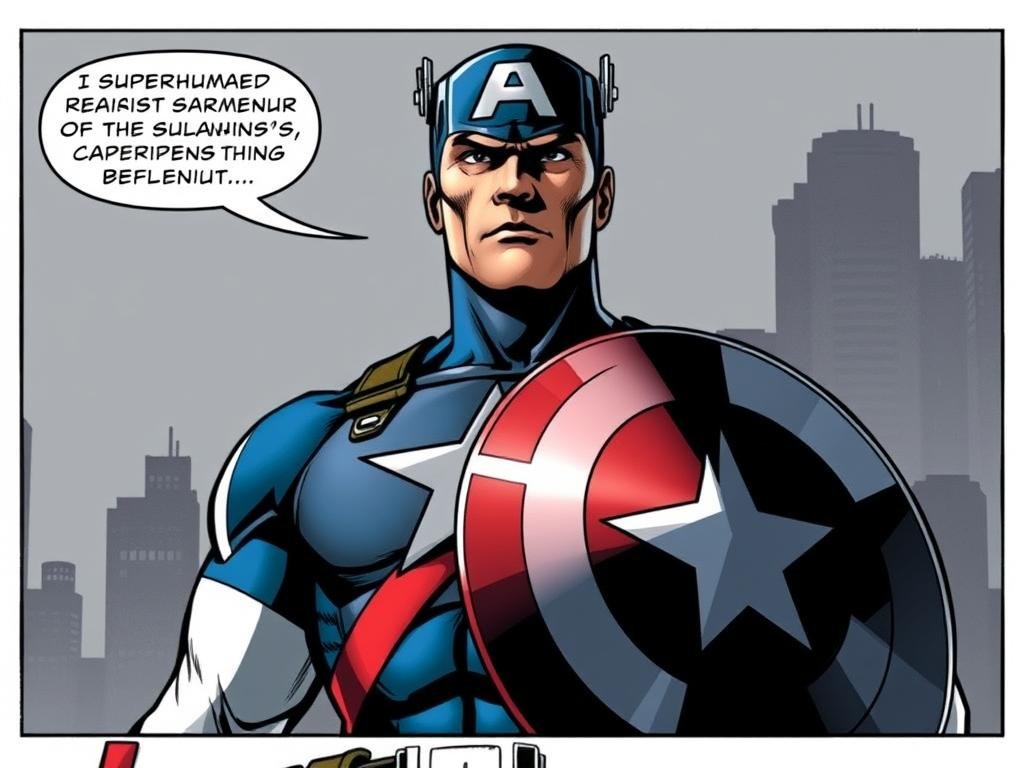
Freedom vs. Security Concerns
One of the primary concerns for Steve Rogers was the balance between freedom and security. He understood that while the registration act promised a safer world through accountability and regulation, it also threatened the very essence of what it meant to be a hero: the freedom to act without governmental oversight.
The freedom to operate independently was crucial for heroes who often had to make split-second decisions in life-or-death situations.
Steve Rogers believed that by registering, heroes would become too entangled in bureaucracy, potentially hindering their ability to respond effectively.
Distrust of Government Control
Steve Rogers’ past experiences with governmental control, particularly his dealings with S.H.I.E.L.D. and the aftermath involving the Winter Soldier, had left him wary of government overreach.
He was concerned that the registration act would give the government too much power over the superhero community, potentially leading to abuse of authority.
- The risk of manipulation and control by government agencies.
- The potential for blackmail or coercion of registered heroes.
Protection of Hero Identities
A significant concern for Steve Rogers was the protection of hero identities and the safety of their loved ones. The registration act required heroes to reveal their identities, which Steve believed would put them and their families in danger.
The comic book series validated this concern when Peter Parker’s (Spider-Man) identity was publicly revealed, leading to an assassination attempt on his Aunt May.
“The secrecy of their identities was not just a preference, it was a necessity for their survival and the safety of those they cared about.”
This concern extended beyond his immediate team to the wider superhero community, demonstrating Steve’s consideration for the welfare of all heroes who would be affected by the registration requirements.
Strengths and Weaknesses of Iron Man’s Position
Iron Man’s stance on the Registration Act was multifaceted, with both compelling arguments and significant drawbacks. As I analyze Tony Stark’s approach, it becomes clear that his position had both merits and flaws that ultimately shaped the Civil War conflict.
The Merits of Accountability
Tony Stark’s push for the Superhero Registration Act was motivated by a desire to increase accountability among superheroes.
I believe that one of the key strengths of his approach was the emphasis on responsibility and oversight.
By registering and regulating superheroes, Tony aimed to prevent unchecked power and ensure that heroes were answerable for their actions. This perspective resonated with many who felt that the lack of accountability had led to catastrophic events, such as the Stamford Incident.
The registration process, in theory, allowed for better management of superhero activities, potentially reducing the risk of collateral damage and enhancing public trust.
Tony’s vision for a more structured and accountable superhero community was rooted in his experience with the consequences of unregulated power.
The Flaws in Tony’s Approach
Despite the merits of accountability, Tony Stark’s approach was marred by significant flaws. I critically examine these flaws to understand their impact on the Civil War conflict.
One of the most troubling aspects was the harsh treatment of unregistered heroes, who were imprisoned without trial. This approach raised serious concerns about civil liberties and the potential for government overreach.
Tony’s creation of a Thor clone, which ultimately resulted in the death of Goliath, was another egregious error. This action crossed ethical lines and demonstrated a dangerous willingness to compromise moral principles in pursuit of his goals.
Furthermore, Tony’s recruitment of young heroes like Spider-Man into the conflict raised questions about his judgment and responsibility as a leader.
Additionally, Tony’s tendency toward unilateral decision-making undermined his own arguments about accountability.
By acting without consulting others or considering alternative perspectives, Tony compromised the very principles he sought to establish. This approach not only damaged his relationships with other heroes but also weakened his position in the long run.
In conclusion, while Tony Stark’s push for accountability had its merits, the flaws in his approach ultimately overshadowed its potential benefits. As I reflect on the Civil War conflict, it becomes clear that a more balanced and inclusive approach might have yielded a more positive outcome.
Strengths and Weaknesses of Captain America’s Position
As the face of the anti-registration movement, Captain America’s position was both principled and problematic. Steve Rogers’ decision to oppose the Sokovia Accords was driven by a strong belief in the importance of personal freedom and the potential dangers of government overreach.
The Value of Independence
Captain America’s resistance against the Accords highlighted the value of independence in the superhero community.
By opposing registration, Steve Rogers emphasized the need for heroes to remain free from government control, ensuring they could act swiftly and decisively without bureaucratic interference.
This stance resonated with many heroes who valued their autonomy and were concerned about the implications of government oversight.
The resistance also underscored the importance of moral integrity, as Captain America was willing to challenge authority when he believed it was unjust.
The Problems with Steve’s Resistance
While Captain America’s resistance was principled, it was not without its flaws. Steve Rogers’ personal loyalty to friends like Bucky Barnes potentially clouded his judgment, leading him to prioritize personal relationships over the broader implications of the Accords.
The conflict escalated into a destructive fight among heroes, which could have been avoided through negotiation and compromise.
By becoming fugitives, Team Captain America limited their ability to help people openly, potentially causing more harm than good in their effort to preserve independence.
| Aspect | Pro-Registration | Anti-Registration |
|---|---|---|
| Government Oversight | Advocates for regulation to ensure accountability | Opposes government control, citing potential for abuse |
| Hero Autonomy | Believes regulation enhances safety and coordination | Fears loss of independence and flexibility |
| Moral Stance | Sees registration as a necessary step for public trust | Views registration as an infringement on personal freedoms |
As Captain America navigated the complexities of the Civil War, his resistance, while rooted in strong moral convictions, faced significant challenges.
The consequences of his actions, including the conflict and the status of fugitives for many heroes, highlighted the need for a balanced approach to superhero oversight.
“The very thing that made us heroes was our willingness to defy the status quo, to challenge authority when it was wrong.” – Steve Rogers
In conclusion, Captain America’s position during the Civil War was multifaceted, reflecting both the strengths of his convictions and the weaknesses of his approach.
Understanding these dynamics provides valuable insights into the complexities of superhero governance and the ongoing debate over accountability and independence.
Critical Reception of the Civil War Storyline
The Marvel Civil War storyline has been a pivotal moment in comic book history, sparking intense debate among fans and critics alike. As a narrative that divided the Marvel Universe, it presented a complex exploration of heroism, responsibility, and the consequences of conflict.
Praise from Fans and Critics
The Civil War storyline received widespread acclaim for its bold storytelling and the way it challenged traditional superhero narratives.
Critics praised the event for its ability to humanize its characters, making their conflicts and motivations more relatable and understandable. The storyline’s impact on the Marvel Universe was significant, as it led to a reevaluation of the heroes’ roles in society and their accountability.
Fans appreciated the epic clash between pro-registration heroes led by Iron Man and anti-registration heroes led by Captain America, finding the ideological debate between Tony Stark and Steve Rogers compelling.
The storyline’s success can be attributed to its well-developed characters and the moral complexity it introduced, making Captain America and Iron Man’s conflict a fascinating study in contrasting values.
Controversies and Criticisms
Despite its praise, the Civil War storyline was not without controversy. Some critics argued that the narrative was overly simplistic, with certain characters acting out of character to fit the plot.
Others felt that the storyline’s resolution was unsatisfying, leaving some plot threads unresolved. The event also sparked debate among fans regarding the morality of the Superhero Registration Act and the implications of government control over superheroes.
The controversy surrounding the storyline was further fueled by the stark contrast between the two factions, with some readers feeling that the narrative unfairly portrayed certain characters.
Nonetheless, the debate generated by Civil War contributed to its significance in comics history, as it encouraged discussion about the role of heroes in society and the consequences of their actions.
Legacy in Comic Book History
The Civil War storyline is considered one of Marvel’s most influential narratives, permanently changing the landscape of the Marvel Universe.
It established a template for hero-versus-hero conflicts that has been replicated in subsequent events. The storyline’s impact on Marvel’s publishing strategy was significant, leading to more universe-spanning crossover events that impacted multiple titles simultaneously.
The Civil War also had a lasting impact on the Marvel Cinematic Universe, as seen in the adaptation of the storyline in the MCU.
This adaptation changed the trajectory of the film franchise, setting up the fragmented state of the Avengers before Infinity War.
The themes explored in Civil War continue to resonate in subsequent Marvel stories, with the tension between freedom and security remaining a central conflict in both comics and films, contributing to its lasting place in comic book history.
Civil War in Other Media
As a pivotal event in the Marvel Universe, Civil War has transcended comic books to influence other media, demonstrating its broad appeal and the complexity of its themes.
The conflict between Iron Man and Captain America has been adapted and reinterpreted in various forms, reaching different audiences and exploring different aspects of the narrative.
Marvel Cinematic Universe Adaptation
The Marvel Cinematic Universe (MCU) brought the Civil War storyline to life in the 2016 film “Captain America: Civil War.”
This adaptation significantly altered the scale of the conflict, reducing the number of involved heroes from hundreds in the comics to a dozen in the film.
Despite this change, the core ideological clash between Tony Stark (Iron Man) and Steve Rogers (Captain America) remained intact, with the Sokovia Accords serving as the catalyst for the conflict.
The MCU version also introduced new elements, such as the involvement of Spider-Man, who was recruited by Tony Stark, contrasting with his public unmasking in the comics.
This adaptation not only brought the Civil War narrative to a wider audience but also integrated it into the larger MCU, setting the stage for subsequent movies.
Animated Series and Video Games
Beyond the MCU, the Civil War narrative has been explored in animated series and video games, offering different interpretations of the conflict.
These adaptations often blend elements from the comics with new twists, catering to both comic book fans and new audiences.
In animated series, the Civil War storyline has been incorporated into shows like “Avengers: Secret Wars” and “Avengers: Black Panther’s Quest,” providing a more condensed version of the events.
Video games, such as “LEGO Marvel Superheroes” and “Marvel: Future Fight,” have also included Civil War-themed content, allowing players to engage with the narrative in interactive ways.
Differences Between Comics and Other Media
While the core conflict of Civil War remains consistent across different media, there are significant differences in how the story is presented. The scale of the conflict, the catalyst for the events, and the resolution all vary between the comics and other adaptations.
In the comics, the Stamford incident triggers the Superhero Registration Act, leading to a universe-wide conflict involving hundreds of heroes. In contrast, the MCU version focuses on the Sokovia Accords and the Lagos catastrophe, involving a smaller group of characters.
The resolution also differs, with Captain America surrendering and being assassinated in the comics, while in the MCU, he goes underground and remains alive.
These differences highlight the flexibility of the Civil War narrative, allowing it to be reimagined for different audiences and media platforms.
Despite these variations, the fundamental themes of identity, responsibility, and the ethics of power remain at the heart of the story, ensuring its continued relevance and appeal.
The Resolution of the Civil War Conflict
In the wake of the Civil War, the Marvel Universe was forever changed, with the effects of the conflict still resonating years later. The clash between Iron Man and Captain America had far-reaching consequences that reshaped the landscape of Marvel Comics.
The Controversial Ending
The Civil War concluded with a dramatic and controversial ending, as Captain America was forced to surrender. This event marked a significant turning point for the character, ultimately leading to his death at the hands of Hydra in The Death of Captain America storyline.
The aftermath saw Bucky Barnes taking up the shield, becoming the new Captain America. This transition challenged readers’ perceptions of the iconic identity and its representation.
Long-term Consequences in Marvel Comics
The long-term consequences of the Civil War were multifaceted. Tony Stark, aka Iron Man, became the Director of S.H.I.E.L.D., attempting to implement registration on a larger scale. However, his tenure was marked by challenges and eventually led to his downfall.
The Fifty-State Initiative was another significant outcome, assigning registered heroes to each state and expanding Marvel’s superhero landscape. Meanwhile, the Secret Avengers began operating underground, further fragmenting the superhero community.
The fallout from Civil War directly contributed to subsequent major storylines, including Secret Invasion and Dark Reign. Norman Osborn rose to power by exploiting the divisions and distrust created during the superhero conflict, marking a dark period in the Marvel Universe.
The Civil War’s impact on Captain America and the Marvel Universe as a whole cannot be overstated. It was a pivotal moment that reshaped the characters and storylines, leaving a lasting legacy in the world of comics.
Fascinating Curiosities About Iron Man vs. Captain America: The Civil War Conflict
As we explore the Civil War storyline, we uncover a multitude of captivating curiosities that enrich our understanding of this pivotal Marvel event. The conflict between Iron Man and Captain America is not just a clash of ideologies but a complex narrative filled with intriguing details.
Behind-the-Scenes Development
The development of the Civil War storyline involved meticulous planning by Marvel Comics. The creators drew inspiration from real-world events and political ideologies to craft a compelling narrative.
Joe Russo, one of the directors of the Marvel Cinematic Universe (MCU) adaptation, noted that the comic book storyline’s complexity and depth were key factors in its appeal.
TheCivil Warstoryline has been praised for its bold approach to exploring the gray areas between heroism and governance.
The original comic book series, written by Mark Millar and illustrated by Steve McNiven, was conceived as a commentary on the post-9/11 world and the Patriot Act.
The creators aimed to explore the tension between freedom and security, a theme that resonated with readers. The storyline’s impact was significant, leading to a major shift in the Marvel Universe.
Alternate Versions and What-If Scenarios
The Civil War storyline has been revisited and reimagined in various alternate universe stories and what-if scenarios.
These narratives offer fresh perspectives on the conflict, exploring different outcomes and character motivations.
For instance, some stories examine a universe where Captain America’s stance on the Superhero Registration Act prevails, while others delve into the consequences of Iron Man’s pro-registration position dominating the narrative.
These alternate versions not only provide entertainment but also serve as a lens through which readers can analyze the original storyline.
They highlight the complexity of the characters and the moral ambiguities of the conflict, making the Captain America and Iron Man saga even more compelling.
Easter Eggs and Hidden Details
The MCU’s adaptation of Civil War is replete withEaster eggsand hidden details that pay homage to the comic book series.
One notable example is Spider-Man’s pose in the airport battle, mirroring the iconic cover of Civil War #7. Such visual references enhance the connection between the comic book and cinematic universes, delighting fans and adding depth to the narrative.
Other details, such as the number on Bucky’s containment cell (D23), referencing Disney’s official fan club, showcase the meticulous attention to detail in the MCU film.
These Easter eggs not only reward dedicated fans but also contribute to the richness of the Marvel Cinematic Universe, making it a more immersive experience.
Furthermore, the film’s use of color schemes to subtly reinforce Team Cap (blues) and Team Iron Man (reds) affiliations is a clever narrative device. It visually underscores the ideological divide between the characters, enhancing the storytelling.
Who Was Really Right? Analyzing the Civil War Debate
As I reflect on the Civil War debate, it becomes clear that both Iron Man and Captain America had compelling arguments. The conflict was a pivotal moment in the Marvel Universe, raising questions about accountability, freedom, and the role of government in superhero affairs.
The Moral Ambiguity of Both Sides
The Civil War was characterized by a deep-seated moral ambiguity. On one hand, Iron Man’s push for regulation under the Superhero Registration Act was driven by a desire to increase accountability and prevent unchecked power.
On the other hand, Captain America’s opposition to the Act was rooted in concerns about government control and the protection of individual freedoms. Both perspectives had merit, and the conflict highlighted the complexity of governing a community of powerful individuals.
| Issue | Iron Man’s Position | Captain America’s Position |
|---|---|---|
| Accountability | Supported regulation for greater oversight | Opposed regulation as an infringement on freedom |
| Government Control | Believed government oversight was necessary | Feared government control would lead to abuse of power |
How Time Has Judged the Conflict
In the years since the Civil War, subsequent events in the Marvel Universe have partially vindicated both sides. The revelation of HYDRA’s infiltration of S.H.I.E.L.D. validated Captain America’s distrust of government agencies.
Conversely, the arrival of Thanos and the ensuing cosmic threats confirmed Iron Man’s concerns about the need for preparedness against larger threats. By 2025, the Sokovia Accords had been fully repealed, suggesting a narrative shift toward Captain America’s position over time.
The passage of time has allowed for a more nuanced analysis of the Civil War conflict, both within the narrative universes and among fans and critics.
Changing real-world political climates have also influenced how readers and viewers interpret the conflict, with different eras emphasizing either security concerns or civil liberties. Ultimately, the debate remains a thought-provoking exploration of the challenges faced by those with great power.
Conclusion: The Lasting Impact of Marvel’s Civil War
As we reflect on the Iron Man vs. Captain America conflict, it’s clear that its impact extends far beyond the comic book pages.
The Civil War storyline has permanently changed how Marvel approaches superhero narratives, introducing more complex moral questions and internal conflicts that continue to resonate with audiences today.
The conflict between Iron Man and Captain America represented a significant maturation of superhero narratives, moving beyond simple good-versus-evil tales to explore complex ethical dilemmas without clear answers.
This shift has influenced not only the comics but also the broader Marvel Cinematic Universe (MCU), with the fractured Avengers in Infinity War being a direct consequence of Civil War‘s events.
The themes of freedom versus security, individual rights versus collective safety, and personal loyalty versus broader responsibility continue to resonate in both fiction and real-world debates.
These are timeless questions that challenge both the heroes in the Marvel Universe and the people in our own world.
Let’s address some frequently asked questions about the Civil War conflict:
Q: What triggered the Civil War in the Marvel Universe?
A: The conflict began with the Stamford Incident, a tragic event that led to a nationwide outcry against unregulated superheroes, prompting the government to propose the Superhero Registration Act.
Q: Why did Iron Man support the Registration Act?
A: Tony Stark, aka Iron Man, believed that regulation would bring accountability and a safer future for the public and the heroes themselves.
Q: Why did Captain America oppose the Registration Act?
A: Steve Rogers, aka Captain America, saw the Act as an infringement on the heroes’ freedom and a threat to their identities and autonomy.
Q: What were the main consequences of the Civil War?
A: The conflict led to a significant divide among the Avengers and other heroes, resulting in a change in the Marvel Universe’s dynamics and setting the stage for future storylines like Infinity War.
Q: How did the Civil War impact the Marvel Cinematic Universe?
A: The events of Civil War were adapted into the MCU movie “Captain America: Civil War,” which then influenced subsequent movies, including Avengers: Infinity War and Avengers: Endgame.
Q: What can we learn from the Civil War storyline?
A: The storyline teaches us about the complexity of moral decisions and the importance of considering different perspectives, whether in fiction or in real life.
Q: Are there any other significant storylines influenced by Civil War?
A: Yes, several storylines have been influenced by the events and themes of Civil War, including the formation of the New Avengers and the Illuminati story arcs.
Q: How has the Civil War storyline been received by fans and critics?
A: The storyline has been widely praised for its bold narrative and complex character development, although it has also faced some criticisms regarding its resolution and impact on certain characters.
For more in-depth analysis and discussions on superhero storylines and characters, visit Hero and Villain World. Join the conversation and explore the vast universe of heroes and villains with us.
FAQ
Q: What triggered the conflict between Tony Stark and Steve Rogers in the Civil War storyline?
A: The introduction of the Sokovia Accords, a United Nations regulation that mandated superhero registration and oversight, sparked the disagreement between Tony Stark and Steve Rogers, as they held differing views on government control and accountability.
Q: What are the Sokovia Accords, and how do they relate to the Marvel Cinematic Universe?
A: The Sokovia Accords are a set of regulations introduced in the Marvel Cinematic Universe, specifically in Captain America: Civil War, which aimed to establish government oversight over superhero activities, directly influencing the events of the movie and subsequent storylines.
Q: Who were some key characters that sided with Tony Stark during the Civil War?
A: Black Widow and other heroes like War Machine and Vision supported Tony Stark’s pro-registration stance, forming Team Iron Man.
Q: What was the significance of the Stamford Incident in the context of the Civil War?
A: The Stamford Incident, a tragic event involving superheroes, served as a catalyst for the Civil War storyline, highlighting the need for regulation and accountability within the superhero community.
Q: How did the Civil War storyline impact the Marvel Universe?
A: The Civil War had far-reaching consequences, affecting character relationships, team dynamics, and the overall Marvel Universe, as it explored complex themes like government control, accountability, and the ethics of superhero actions.
Q: What were the main arguments presented by Steve Rogers against the Superhero Registration Act?
A: Steve Rogers opposed the registration act, citing concerns over freedom vs. security, the potential for government abuse of power, and the need to protect hero identities, reflecting his commitment to the values of independence and heroism.
Q: How was the Civil War storyline received by fans and critics?
A: The Civil War storyline garnered significant attention and praise from both fans and critics, who appreciated its nuanced exploration of complex themes and the moral ambiguity of the characters’ positions.
Q: In what ways was the Civil War storyline adapted in other media, such as animated series and video games?
A: The Civil War narrative was adapted and referenced in various forms of media, including animated series and video games, often incorporating elements and themes from the original comic book storyline.
